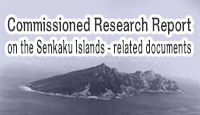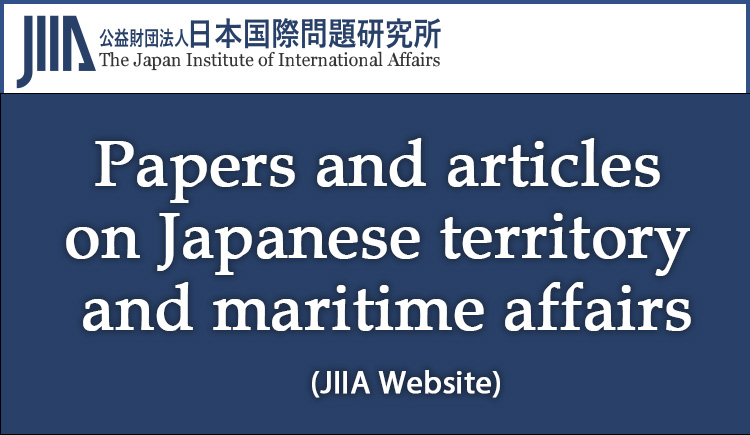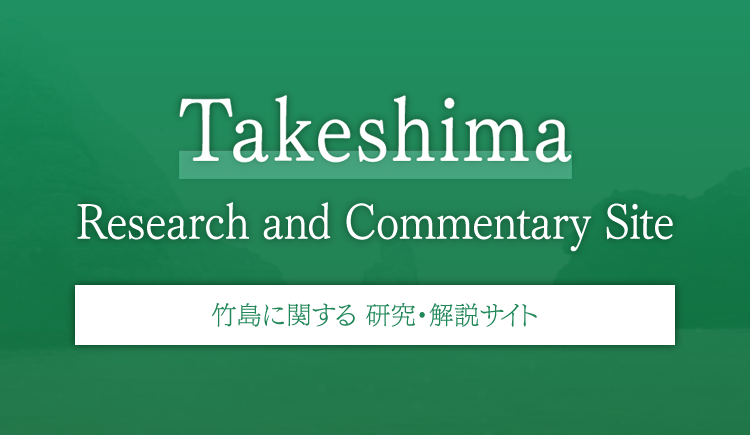The documents and materials published on this website were collected, researched, and prepared with advice from experts, as a part of a Government-commissioned project. The contents of this website do not reflect the views of the Government. Links to external sites (domains other than https://www.cas.go.jp) are not under the management of this site. For linked websites, please check with the organization/group that manages the website for the link in question.
The South China Sea and East China Sea
Column Mid-Ocean Archipelagos and Law of the Sea
ISHII Yurika (Associate Professor, Department of International Relations, National Defense Academy of Japan)
*Adobe Acrobat Reader DC, provided by Adobe, is needed to view the PDF files. If you do not have the software, please download it from the linked site. Adobe Acrobat Reader DC
1. An Archipelagic Baseline circling the Spratly Islands?
A “mid-ocean archipelago1” refers to a maritime area encompassed within baselines drawn on the outermost edges of a group of islands that do not satisfy the geographic conditions provided under Article 47 of the United Nations Convention on the Law of the Sea (UNCLOS) of 1982.2
Under UNCLOS, the types of baselines that form the basis for delineating territorial seas are stipulated to be: (1) normal baselines, (2) straight baselines, and (3) archipelagic baselines.
A normal baseline “is the low-water line along the coast as marked on large-scale charts officially recognized by the coastal State.”3 A straight baseline can join appropriate points “in localities where the coastline is deeply indented and cut into, or if there is a fringe of islands along the coast in its immediate vicinity.”4 An archipelagic baseline is a line that joins the outermost points of the outermost islands of an “archipelago.” Under the Convention, an “archipelago” means a group of islands, including parts of islands, interconnecting waters and other natural features which are so closely interrelated that such islands, waters and other natural features form an intrinsic geographical, economic and political entity, or which historically have been regarded as such.5
The Convention also sets forth specific provisions concerning the geographic conditions for archipelagic baselines.6 First, within archipelagic baselines are the main islands and an area in which the ratio of the area of the water to the area of the land, including atolls, is between 1 to 1 and 9 to 1. Second, the length of such archipelagic baselines shall not exceed 100 nautical miles, except that up to 3% of the total number of baselines enclosing any archipelago may exceed that length, up to 125 nautical miles.
The sovereignty of an archipelagic State extends to the waters enclosed by the archipelagic baselines (to the air space over the archipelagic waters, as well as to their bed and subsoil and the resources contained therein).7 Ships of all States enjoy the right of innocent passage through archipelagic waters.8 In addition, the breadth of the territorial sea, the contiguous zone, the exclusive economic zone and the continental shelf are measured from archipelagic baselines.9 An archipelagic State may designate sea lanes and air routes through or over its archipelagic waters and the adjacent territorial sea, and foreign ships and aircraft may exercise the right of navigation and overflight solely for continuous, expeditious and unobstructed transit.10
Today, there are 22 archipelagic States,11 and according to a 2017 report by the International Law Association (ILA), the vast majority of the archipelagic baselines of these States broadly satisfy the geographical conditions set out in Article 47 of the Convention.12 In contrast, a “mid-ocean archipelago” does not meet the water/land ratio requirements as stipulated in Article 47 due to the presence of a mainland continent or similar land mass.13
There are examples of the practice of States drawing baselines to the outermost edges of a group of islands located at a distance from the mainland, even before the conclusion of UNCLOS, including the Faroe Islands (Denmark), the Galapagos Islands (Ecuador), the Svalbard Islands (Norway), the Canary Islands (Spain), and the Azores Islands (Portugal).
This concept has become problematic in recent years, given that Chinese researchers have advocated that China can draw a baseline to the outermost edges of the Spratly Islands.14 In 2019 the government of the People’s Republic of China (PRC) objected to an application submitted by Malaysia to extend its continental shelf. In that objection, it was stated China that “the long-established practice in international law related to continental States’ outlying archipelagos shall be respected.”15
Note1
Also referred to as “outlying archipelago” or “off-shore archipelago.” In Chinese this is termed “Yangzhong Qundao.”
Note2
United Nations Conventions on the Law of the Sea, adopted on 10 December 1982, entered into force on 16 November 1994, 1833 UNTS 3[UNCLOS].
Note3
Ibid., Article 5.
Note4
Ibid., Article 7(1).
Note5
Ibid, Article 46(b).
Note6
Ibid., Article 47.
Note7
Ibid, Article 49.
Note8
Ibid, Article 52(1)
Note9
Ibid, Article 48.
Note10
Ibid, Article 53(1).
Note11
These countries are: Antigua and Barbuda, Bahamas, Cabo Verde, Comoros, Dominican Republic, Fiji, Grenada, Indonesia, Jamaica, Kiribati, Maldives, Marshall Islands, Mauritius, Papua New Guinea, Philippines, Sao Tome and Principe, Seychelles, Solomon Islands, St. Vincent and the Grenadines, Trinidad and Tobago, Tuvalu, and Vanuatu. International Law Association (ILA) Report, “Archipelagic States Practice,” drafted by Ashley J. Roach on 20 June 2017, available at https://ila.vettoreweb.com.
Note12
ILA, Conference Report Johannesburg 2016, available at http://www.ila-hq.org/index.php/committees. C. G. Lathrop, “Baselines,” in Oxford Handbook of the Law of the Sea, ed. Donald Rothwell (Oxford University Press, 2015), p. 69.
Note13
Sophia Kopela, Dependent Archipelagos in the Law of the Sea (Martinus Nijhoff, 2013), p. 5.
Note14
For further details see Yurika Ishii, “Maritime Security and the Rule of Law: The Concept of ‘Mid-Ocean Archipelago,’” in Japan Institute of International Affairs, FY2018 Ministry of Foreign Affairs Diplomacy and Security Research Program Study: Maritime Security and Realization of the Rule of Law in the Indo-Pacific Region, p. 76, https://www2.jiia.or.jp/pdf/
research/H30_Indo_Pacific; and Yurika Ishii, “A Critique Against the Concept of Mid-Ocean Archipelago,” in Tamada Dai & Keyuan Zou (eds.), Implementation of the United Nations Convention on the Law of the Sea (Springer, 2021), p. 133.
Note15
Commission on the Limits of the Continental Shelf (CLCS), China, Communication dated 18 September 2020, CML/63/2020, para. 3, https://www.un.org/depts/los
/clcs_new/submissions_files/
mys_12_12_2019/
2020_09_18_CHN_NV_UN_009_e.pdf. The original wording is as follows:
“At the same time, China believes that the long established practice in international law related to continental States’ outlying archipelagos shall be respected. The drawing of territorial sea baselines by China on relevant islands and reefs in the South China Sea conforms to UNCLOS and general international law.”
2. Legal Status of the “Mid-ocean Archipelagos”
Views in support of mid-ocean archipelagos are based on the argument that: (1) the issue concerning mid-ocean archipelagos is “a legal vacuum” left by the UNCLOS, or (2) mid-ocean archipelagos are recognized under an international customary law regime beyond UNCLOS. The following sets out why the essential nature of the Convention does not allow for either of these claims.
First, the Convention establishes the maritime zones comprehensively.16 In other words, all maritime areas are defined as falling under one of the areas stipulated in the Convention (internal waters, territorial seas, EEZ, continental shelf, archipelagic waters, high seas, and deep seabed). If this were to be interpreted differently, it would allow the phenomenon of “creeping jurisdiction” of coastal states, which would render meaningless the definition of each maritime zone and the stipulation that no reservations or exceptions may be made to the Convention.17
It was indeed the independence of a number of archipelagic States during the 1970s to the early 1980s, which shifted the arguments regarding the legal status of the archipelago, that encouraged the establishment of archipelagic waters. During the colonial era, their former suzerain states did not consider adopting a special regime for the group of islands. Rather the colonial powers subordinated local interests to the considerations of the freedom of the seas.18 It was to counter this that during UNCLOS III, seeking an equitable distribution of natural resources, the archipelagic groups consisting of Fiji, Mauritius, Indonesia, and the Philippines called for creating special regimes for themselves. It could be said that these regimes of archipelagic waters were interconnected with the issue of economic development.19 That is also why a regime for island groups in countries with a continental mainland, i.e., mid-ocean archipelagos, was not adopted.20 However, there are other selectively created regimes in UNCLOS.21 This background does not affect the interpretation of the Convention itself.
Furthermore, in the South China Sea arbitration case, the Arbitral Tribunal constituted under Annex VII to the UNCLOS handed down the following decision. In this case, when determining whether the Arbitral Tribunal had jurisdiction over the Philippines’ claims, the issue was whether any feature of the Spratly Islands constituted an island under Article 121(1) or a rock under Article 121(3) of UNCLOS.22 The Tribunal first observed that because China is constituted principally by territory on the mainland, it does not meet the requirements of an archipelagic State and, therefore, cannot draw an archipelagic baseline. Such baselines would not satisfy the land-to-water ratio stipulated under the Convention. The Tribunal also found that “any application of straight baselines to the Spratly Islands in this fashion would be contrary to the Convention.”23 To begin with, the geographic conditions stipulated under Article 7 do not include mid-ocean archipelagos. Although the Convention does not preclude the possibility of drawing straight baselines except in the cases provided for in Article 7, it excludes the possibility of employing straight baselines in other circumstances from the general provision of Article 7 and the conditional permission provision in Article 47. Any other interpretation would effectively render the conditions in Articles 7 and 47 meaningless. Furthermore, the Tribunal found no evidence that any deviations from this rule have amounted to the formation of a new rule of customary international law that would permit a departure from the express provisions of the Convention.
Based on the above, mid-ocean archipelagos that have no basis in the Convention should not be recognized under international law in general.
Note16
In The Matter of The South China Sea Arbitration, The Philippines v. People’s Republic of China, PCA Case N 2013-19, 12 July 2016 [South China Sea Arbitration], para. 246.
Note17
UNCLOS, Article 309.
Note18
Ram Prakash Anand, “Mid-Ocean Archipelagos in International Law: Theory and Practice,” Indian Journal of International Law 19 (1979).
Note19
Kopela, Dependent Archipelagos in the Law of the Sea, pp. 26-27.
Note20
Shigeru Oda, The Law of the Sea in Our Time Ii (Sijthoff, 1977), p. 156; GA Official Record, 27th Sess. Supp. No. 21 (A/8721) Chap 1, para. 23.
Note21
One could easily come up with the instances of the coastal state’s rights over the contiguous zone and the definition of a strait where transit passage regime applies. For the former example, see Shigeru Oda, “The Concept of the Contiguous Zone,” International and Comparative Law Quarterly 11 (1962).
Note22
South China Sea Arbitration, para. 571. In a government white paper in 2016, China had stated that, “China has internal waters, territorial seas, contiguous zone, EEZ and continental shelf based on the Nansha Islands (Four Shas),” which is why this point was considered by the Tribunal.
Note23
In The Matter of The South China Sea Arbitration, The Philippines v. People’s Republic of China, PCA Case N 2013-19, 12 July 2016 [South China Sea Case], para. 575.
3. Conclusion
The concept of a “mid-ocean archipelago” is nothing more than a part of the maritime interests being pursued by China. However, this material provides an example of how the “rule of law” in the international community can play a role in confronting excessive claims of rights.
James Crawford states that the “rule of law” in international society implies (1) that no one is outside the law; (2) that it is by some means or in some sense democratic, at least in the sense of being accountable to others; (3) that its instituted authorities – notably the Security Council – are in principle subject to legal constraint; (4) that there is something like a constitution of international society; and (5) that society is not irremediably unjust.24 When regional powers assert excessive maritime claims, it is essential to ensure that they do not cross the clear boundary established by international law.
[Supplementary note] This column is a revised version of p.76 of the paper by Yurika Ishii, “Maritime Security and the Rule of Law: The Concept of ‘Mid-Ocean Archipelago,” in Japan Institute of International Affairs, FY2018 Ministry of Foreign Affairs Diplomacy and Security Research Program Study: Maritime Security and Realization of the Rule of Law in the Indo-Pacific Region and Y. Ishii, "A Critique Against the Concept of Mid-Ocean Archipelago," in D. Tamada and K. Zou (eds.), Implementation of the United Nations Convention on the Law of the Sea (Springer, 2021), pp.133-147 https://doi.org/10.1007/978-981-33-6954-2_8. This column is posted to the Research & Commentary site which is a website created under a research project commissioned by the Office of Policy Planning and Coordination on Territory and Sovereignty, Cabinet Secretariat, the Government of Japan. A Japanese version of this column is available at:
https://www.cas.go.jp/jp/ryodo/kenkyu/senkaku/chapter04_column_02.html
Note24
James Crawford, Chance, Order, Change: The Course of International Law (Brill, 2014), p. 342.
Senkaku Islands
Research and Commentary Site
- I Comprehensive issues
- II Commentary on themes by historical period
- III Analysis of claims by other countries
- IV The South China Sea and East China Sea





